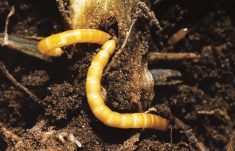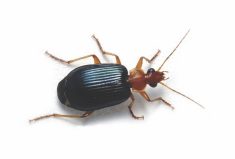Glacier FarmMedia – A group of western Canadian researchers is trying to create wheat strains with built-in resistance to wheat midge. Though midge-tolerant varieties are available, they are on a mission to add another layer of defence.
“One thing biologists have noticed is there are certain varieties of wheat that, for whatever reason … where the midge will not lay eggs,” said James Harynuk, a professor in the Faculty of Science at the University of Alberta.
“But they also know this wheat will protect other plants nearby. Whatever it is, there’s some molecule or collection of molecules being generated by this variety of wheat that are being released into the air.”
Read Also

Could crop sharing be a viable option for your farm?
Crop sharing could be a good option for young and beginning farmers.
Harynuk and his colleagues are trying to identify the midge-repelling molecules. The next step is to determine the genes responsible for generating them. Once identified, they can be bred into new strains of wheat.
“Once you have this wheat that is giving good yields and protecting itself from the wheat midge, you can mix that in with your crop, because it protects the plants around it,” he said. “And then the rest of your wheat can be another variety that produces high yields.”

During an average year on the Prairies, wheat midge can cause up to $60 million in crop damage. That number can jump to $300 million in a bad year, said Harynuk.
“Wheat midge is the number one insect pest threatening wheat crops across Western Canada. They damage wheat by laying their eggs in the kernels to hatch their larvae.”
He said new wheat varieties may be available soon.
“Our goal is that by this time next year, we should know what the genetic markers are. And then it’s just a question of how quickly plant breeders can incorporate those genes into new varieties. It’s not going to be that far off.”
Depending on the molecules identified by researchers, deploying molecule emitters in fields could be a Band-Aid solution for dealing with wheat midge outbreaks until new varieties can be bred, said Harynuk, although he noted this could add labour costs.
“You might need 30 or 40 of these things per quarter section,” he said. “Yes, it’s a pain and a lot of work to do that. It’s an added cost, but maybe it’s not as bad as losing an entire field if there’s a bad wheat midge outbreak. It’s possible there will be an emergency Band-Aid solution available for next season.”
Working with Harynuk are Boyd Mori and A. Paulina de la Mata at the University of Alberta as well as Alejandro Costamagna, Curt McCartney and Chaminda Weeraddana at the University of Manitoba.
– This article was originally published at the Alberta Farmer Express.















